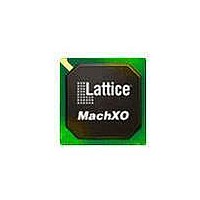LCMXO640C-4FTN256C Lattice, LCMXO640C-4FTN256C Datasheet - Page 25

LCMXO640C-4FTN256C
Manufacturer Part Number
LCMXO640C-4FTN256C
Description
CPLD - Complex Programmable Logic Devices 640 LUTs 159 IO 1.8/ 2.5/3.3V -4 Spd
Manufacturer
Lattice
Datasheet
1.LCMXO640C-3TN100C.pdf
(95 pages)
Specifications of LCMXO640C-4FTN256C
Memory Type
SRAM
Number Of Macrocells
320
Maximum Operating Frequency
550 MHz
Delay Time
4.2 ns
Number Of Programmable I/os
159
Operating Supply Voltage
1.8 V, 2.5 V, 3.3 V
Supply Current
17 mA
Maximum Operating Temperature
+ 85 C
Minimum Operating Temperature
0 C
Package / Case
FTBGA-256
Mounting Style
SMD/SMT
Supply Voltage (max)
3.465 V
Supply Voltage (min)
1.71 V
Programmable Type
*
Voltage - Input
*
Speed
*
Mounting Type
*
Cpld Type
FLASH
No. Of Macrocells
640
No. Of I/o's
159
Propagation Delay
4.2ns
Global Clock Setup Time
1.3ns
Frequency
420MHz
Supply Voltage Range
1.71V To 3.465V
Rohs Compliant
Yes
Lead Free Status / RoHS Status
Lead free / RoHS Compliant
Available stocks
Company
Part Number
Manufacturer
Quantity
Price
Company:
Part Number:
LCMXO640C-4FTN256C
Manufacturer:
Lattice Semiconductor Corporation
Quantity:
10 000
Company:
Part Number:
LCMXO640C-4FTN256C-3I
Manufacturer:
st
Quantity:
53
Lattice Semiconductor
Device Configuration
All MachXO devices contain a test access port that can be used for device configuration and programming.
The non-volatile memory in the MachXO can be configured in two different modes:
The SRAM configuration memory can be configured in three different ways:
Figure 2-22 provides a pictorial representation of the different programming modes available in the MachXO
devices. On power-up, the SRAM is ready to be configured with IEEE 1149.1 serial TAP port using IEEE 1532 pro-
tocols.
Leave Alone I/O
When using IEEE 1532 mode for non-volatile memory programming, SRAM configuration, or issuing a refresh
command, users may specify I/Os as high, low, tristated or held at current value. This provides excellent flexibility
for implementing systems where reconfiguration or reprogramming occurs on-the-fly.
TransFR (Transparent Field Reconfiguration)
TransFR (TFR) is a unique Lattice technology that allows users to update their logic in the field without interrupting
system operation using a single ispVM command. See Lattice technical note #TN1087, Minimizing System Inter-
ruption During Configuration Using TransFR Technology, for details.
Security
The MachXO devices contain security bits that, when set, prevent the readback of the SRAM configuration and
non-volatile memory spaces. Once set, the only way to clear the security bits is to erase the memory space.
For more information on device configuration, please see details of additional technical documentation at the end
of this data sheet.
• In IEEE 1532 mode via the IEEE 1149.1 port. In this mode, the device is off-line and I/Os are controlled by
• In background mode via the IEEE 1149.1 port. This allows the device to remain operational in user mode
• At power-up via the on-chip non-volatile memory.
• After a refresh command is issued via the IEEE 1149.1 port.
• In IEEE 1532 mode via the IEEE 1149.1 port.
BSCAN registers.
while reprogramming takes place.
2-22
MachXO Family Data Sheet
Architecture












